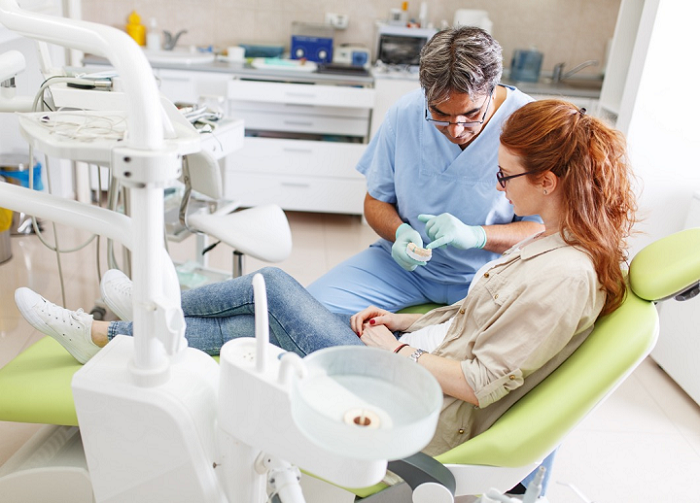Instead of metal braces, clear aligners, also known as invisible aligners, are becoming increasingly popular for straightening out pearly whites. According to NewMouth, some of the most popular brands of clear dental aligners include byte, Candid, Invisalign, and SmileDirectClub, and these last two both have something else in common as well: they use 3D technology in their workflows.
The hardware for producing these clear dental aligners comes from a number of companies in the AM industry, including Prodways, EnvisionTEC, Structo, and Formlabs. In the broader spectrum, Sam Wainwright, the Dental Product Manager for Formlabs, said at AMS 2020 in February that 36% of dental labs in the US use 3D printing technology, and we’re seeing AM dental applications, including aligners, continue to evolve.
Founded in 2014 by Marina Domracheva, MD, medical technology company 3D Predict makes innovative dental aligners that are driven by artificial intelligence (AI) software, which it refers to as “one-of-a-kind” in a press release sent to 3DPrint.com.
“3D Predict has the right combination of commitment, technology and flexibility to see the unseen and look beyond the evident in 3D planning and customer support,” the website states.
Five million patients across the US begin orthodontic treatment each year, making it an almost $2 billion market, and of that large number, roughly four million are not cut and dry cases, but moderate or complicated ones. So it’s a pretty booming business, to say the least.
“The growing orthodontics market is driving an even greater demand for more effective treatment models. We saw a way to combine clinical experience and cutting-edge technology to equip orthodontists with a dental device to treat even the most complex cases with greater precision and efficiency,” 3D Predict’s Founder and CEO Domracheva explained.
3D Predict received FDA clearance for its AI-driven dental aligners in February, and is now launching the product at its new US headquarters in New York.
These aligners differ from braces and other aligners because the company completes a Deep CBCT® Analysis of both the bone and root; 3D Predict does not use roots taken from an anatomical library. The patented, proprietary software then creates extremely precise 3D models of the whole smile, including the crowns, and these models are used to design patient-specific dental aligners, which the company states are able to prevent “anatomically impossible” tooth movements. This results in a 30% treatment time decrease, and 50% fewer teeth alignment corrections, allowing orthodontists to “increase their margin and save time for new patients” using far more effective aligners.
The software fuses data on the whole tooth, and the information is sent to the orthodontist, so they can have a clearer idea about any possible issues, like root collision, that could come up during treatment. A color map of the 3D model shows the distance from the root to the bone, and allows orthodontists to see just how the roots will move while they’re being treated with the aligners, so that they can come up with a safe, predictable plan that will mean patients will have to come back at least five less times for corrections.
“The application of technology in aligners equips doctors with a depth of information about the tooth that was previously not available. 3D Predict gives us meticulous detail using data that allows doctors to analyze the tooth as a whole yielding better outcomes for the patient,” said Dr. Maria Sokolina, DDS, who practices in both New York and New Jersey.
Once the treatment plan is in place, the aligners are then 3D printed out of a BPA-free, crack-resistant, transparent plastic. 3D Predict’s 3D printed dental aligners can treat a number of different cases, such as an under bite and crowding.
“As a result of today’s COVID restrictions, currently more and more doctors are making their choice in favor of clear aligner therapy versus braces,” Domracheva stated. “Treatment using clear aligners requires less frequent and shorter consultations with less manual procedures, so it is safer and more convenient for doctors and patients in the current environment.”
(Source/Images: 3D Predict)
